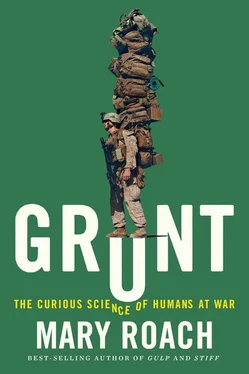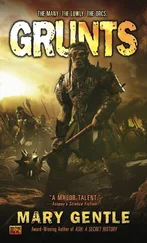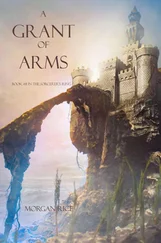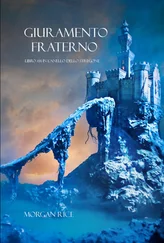“So we took Bathroom Malodor,” Dalton says, forking something trimethylaminey, “and we sweetened it up a little.” The inspiration was provided by a panicked Las Vegas hotel owner who had telephoned Dalton after his sewage pipes backed up. The addition of the flowery-smelling cleaning product he’d used had made the smell yet more odious.
Mauté reveals the other reason Stench Soup includes a fruity top note. “Most people when they do an initial sniff, it’s shallow. And then if the top note is pleasant, they’re willing to embrace it.”
Dalton jumps in. “So the sweet note hits you, and you inhale more deeply and—” They’re like excited siblings home from a field trip.
“—and that sulfur is just waiting for you on the keeper inhale.”
“And the sulfurs, once they get in your nose? They last. They get trapped in the mucous. They keep rebinding to the same receptors.”
It’s impressive, the ingenuity that goes into a top-flight noxious-smelling substance. The British S liquid included a compound that delayed the onset of the odor, thereby “improving the chances of the operator being able to escape before the smell was detected.”
Would that wars could be fought and won this way—with weapons that didn’t kill or harm. If sacrificing lives for the larger good of nation or cause were not part of the moral equation, imagine the enterprise that would have gone into morale-sapping instead of atom-splitting and armor-piercing. In the same delightful category as Stench Soup, we have the brainchild of Bob Crane, a materials engineer at a research lab at Wright-Patterson Air Force Base who attended a nonlethal weapons brainstorming session during Operation Desert Storm.
Crane set the scene for his idea. The enemy is hunkered down, taking fire. Days go by. The supply lines are cut off. The men are hungry, lonely, angry. Now you introduce the secret weapon: the nostalgic aroma of fresh-baked bread. Crane is an expert in microencapsulation, the technology behind, among many other things, scratch ’n’ sniff. It’s possible to encapsulate a scent in tiny grains of a powder that could then be dropped over the enemy position while the fighters sleep. The next day they walk over the microcapsules, breaking them open and releasing the scent. It’s too much. They miss home, they miss their mother, they decide to desert.
AS CROCKER promised, SAC-23 stank “lastingly.” No one knew this better than the quality control testers of Maryland Research Laboratories, to which the OSS had shipped off a box of two-inch lead tubes of it. “Almost without exception,” states the report, “the operator was contaminated when squirting the contents of the tube.”
A Major John Jeffries of the OSS ran some tests of his own. Twelve percent of the tubes, he wrote in an acid letter from July of 1944, were leaking when they arrived in his office . When ten of the nonleaking tubes were placed in an oven to approximate warm weather warehouse conditions, all commenced to ooze. To assess the real-life practicalities of discharging SAC-23, Jeffries dressed a dummy in a military uniform. One out of three tubes “backfired” onto his hand. Even just unscrewing the cap, he wrote, it was “impossible to prevent getting some of the liquid on my hand.”
Storage and dispersal issues have continued to vex the malodorant community. There were so many problems with a Vietnam-era concoction that the developers considered a binary delivery system, two compounds kept segregated like epoxy components, producing a stench only in combination. Dalton told me the story of a catastrophic misfire during a test of Stench Soup. To contain the stink, Dalton had subjects wear an airtight plastic hood. “It was like a biosafety suit, only we were putting the contaminated environment inside .” A flexible tube delivered malodorized air through a sealed port in the hood. On the third day, the system malfunctioned. Instead of pumping in Stench Soup as a gas of carefully calibrated concentration, it bubbled in the undiluted source. The subject happened to be one of Dalton’s military funders. When it was over, the man pulled off his hood and reached up to find the whole back of his head saturated with the oil. Dalton was speechless. “I kept opening my mouth like a carp, and nothing would come out. My technician goes, ‘Gosh, was it on you when you got here?’ Trying to put the blame on him! Like, ‘Perhaps your hair gel?’” The man was heading straight from Monell to the airport. “We had to take him up to the animal floor and let him take a shower.”
Meanwhile, back in time, the OSS had a bigger problem. The tubes were defective, and there wasn’t time to redesign them. Someone had gone ahead and added Who, Me? to the OSS catalog. Urgent cable requests were pouring in. Ten thousand tubes on order. “Memorandum on ‘Who, Me?’: Prevention of Contamination of the Operator” details the agency’s scramble for a fix. Slip-on paper hand shields? Too flimsy. Cloth-backed paper shields proved sturdier, but conferred protection only “when one squirts from a horizontal position.”
In the end, the OSS opted for rubber shields, despite a domestic rubber shortage dire enough to have prompted tire rationing and soon-to-be collectible posters (America Needs Your SCRAP RUBBER). Along with gas masks, life rafts, and jeep tires, the nation’s wartime rubber needs would come to include rubber Who, Me? sleeves with anti-dribble operator-protection lip.
Late in 1944, 95 rubber-accessorized Who, Me? tubes were rushed to Maryland Research Laboratories. They passed the Rough Handling Test. The Accelerated Aging Test. The Tropical Weathering Test and the Arctic Storage Test. The Combined Rough Handling and Tropical Weathering Test. Only once was a tester’s hand contaminated, owing to “a strong wind blowing across the direction of fire.” At last! The report of this final round of testing, dated November 9, 1944, pronounced Who, Me? ready for production and shipment to the field. Federal Laboratories was persuaded to take the order: 9,000 units, at 62 ½ cents each—enough revenue to cover the purchase and installation of the very finest fume hoods money could buy.
And there the story should have ended. But did not. Ernest Crocker, sensing the trough of lucrative government contracts being pulled from under his snout, dropped a stink bomb of his own. “The odor of Who, Me? is not considered objectionable by Orientals.” Humiliating the Japanese in occupied China, you will recall, had been Stanley Lovell’s original goal. Crocker offered to develop a new malodorant. Production was delayed yet again. More tests ordered. Your taxpayer dollars shaking their little green heads in disbelief.
“In discussions with a Navy physician who had dealt a great deal with Oriental peoples,” reads the Arthur D. Little company’s February 19, 1945, Supplement to Final Report on Who, Me?, “the conclusion was reached that only two types of foulness could be counted upon as certainly objectionable: skunky odors and cadaverous odors. “With ‘Who, Me?’ as a pattern, but with skunkiness substituted for fecal odor, we produced ‘Who, Me?– II.’ This preparation has an atrocious odor, with pronounced penetrative and lasting qualities. It is reasonably certain that it will fill all Japanese requirements.” Five hundred Who, Me? and one hundred Mark II Oriental Who, Me? tubes were finally manufactured.
Not a single one was shipped to the field. Why? Because the National Defense Research Committee had been working on a far more lasting and penetrative weapon for use against the Japanese. Seventeen days before the second and final Final Report on Who, Me? was released, the United States dropped an atomic bomb on Hiroshima.
ON A fifteen-hour flight, it is not unusual to notice an unpleasant bathroom odor or even, depending on how much turbulence there’s been, the smell of vomit. It is unusual, though, to notice these smells emanating from an overhead compartment. Six hours into a flight to South Africa, that is what began to happen to Pam Dalton. “I had stood up for the first time, to go to the restroom, so my nose was right about at that height. I thought, Holy shit, those are my odors .”
Читать дальше












